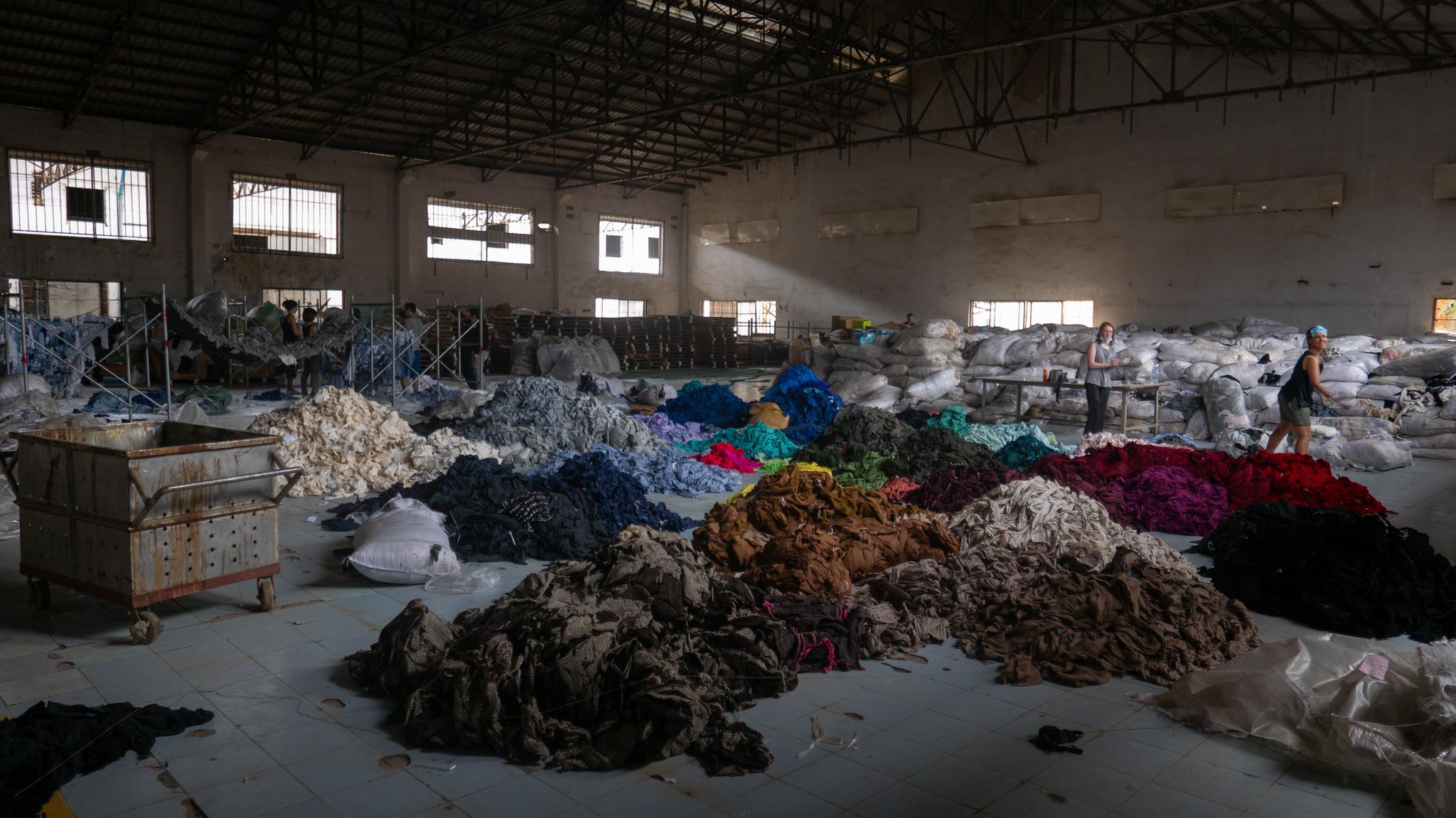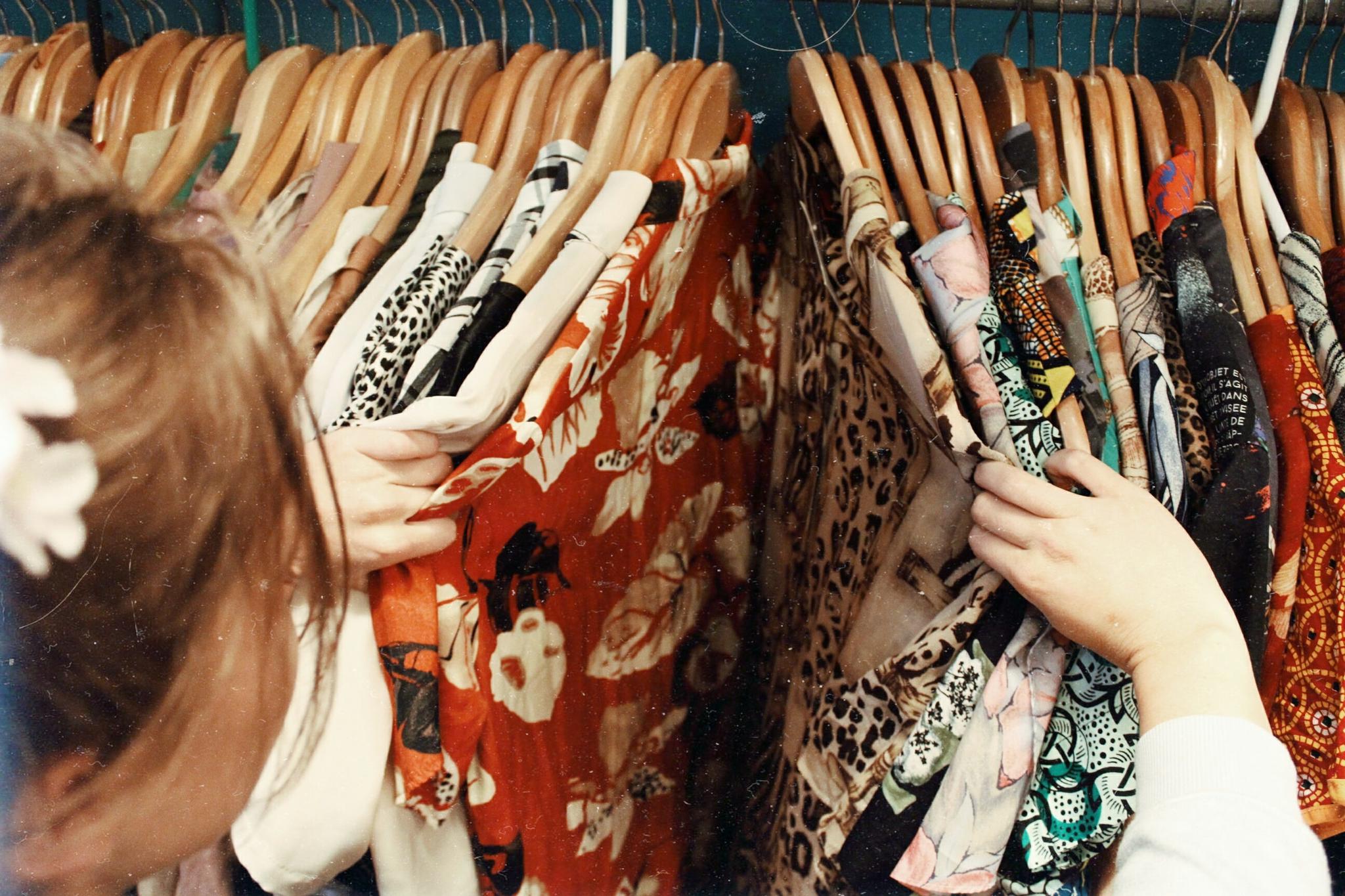Fast Fashion's Environmental Impact - and What You Can Do
Fast Fashion's Environmental Impact - and What You Can Do
It’s reported that the fashion industry accounts for a whopping 10% of global carbon emissions, and consumers are now buying 60% more garments than they were 15 years ago. The term ‘fast fashion’ generally refers to clothing that is made to replicate high-fashion designs with the explicit intention to be marketed quickly and made at a low cost. However, the practices that allow for this lightning-speed turnover in production also come with environmental and social costs – from waste and environmental pollution, to unsafe working conditions.
Waste
In addition to the actual waste of textiles and water that occur during the process of creating garments, the concept of fast fashion also encourages consumers to look at clothing as temporary and results in the average American throwing about 80 pounds of clothing and textiles away annually. It’s estimated that the amount of clothing Americans throw away every year has doubled in the last 20 years, and currently amounts to about 14 million tons.
Fast fashion is also designed to be manufactured as quickly as possible, meaning that the textiles used likely won’t last as long as more durable, expensive alternatives. That means that on top of fast fashion brands churning out 11 to 15 seasons of clothing in a year (the fashion industry’s technique to make you feel like your clothing is already out of style after a week), the clothes that you buy likely won’t stand up to wear and tear and are more likely to be thrown out.

Emissions
In addition to wasted garments from this quick turnover, fast fashion's production process itself churns through huge amounts of water and is highly carbon-intensive. You may have heard the statistic that it can take 2,700 liters of water to make a single t-shirt, but the production of polyester and other synthetic fibers also produces huge amounts of greenhouse gases. The World Resources Institute states that while synthetic fibers waste less water than their cotton counterparts, they actual have a much larger carbon footprint. In 2015 alone, polyester production released about 1.5 trillion pounds of carbon dioxide into the atmosphere, the equivalent of 185 coal-fired power plants’ annual emissions. The emissions produced from making garments is only worsened by the energy it takes to transport them all over the world.
Social Justice Issues
Issues of sustainability are closely intertwined with social justice issues. The environmental impact of fast fashion cannot be addressed without also discussing how workers creating garments for these brands are treated, and how they disproportionately experience the effects of those environmental impacts.
Unsafe working conditions and practices like forced or unpaid overtime are just a few of the strategies that fast fashion brands use in order to maximize profits and garment turnover. These unsafe working conditions include exposing workers to environmental hazards such as heavy metals and toxins from the process of textile dying, as well as poor ventilation and repetitive-motion tasks for long hours. These labor issues disproportionately impact women and communities of color, with 80% of the 74 million textile workers worldwide being women of color. Economic exploitation of factory workers in order to quickly produce fast fashion results not only in environmental harms, but social injustices.
What we can do
One of the biggest things that can keep us coming back to fast fashion time and again is the low price. However, there are ways to shop sustainably that will actually save you money while lessening the huge environmental impact of the garment industry.
Buy Less
While this could be a difficult option for some, it’s no doubt that the most sustainable clothing is the clothing that you already own. We have unfortunately been conditioned to feel like we need new clothes with every season, and it certainly feels good to buy a brand-new item and wear it out for the first time. However, there is a reason we have been conditioned to feel like this – so that we continue buying more and more. The next time you feel the need to purchase something new, try setting aside some time to really go through what you already have. Try on outfits you might not have worn in a while and experiment with new combinations you might not have thought of. Scrolling through Pinterest or other visual content platforms might give you some inspiration of outfit combinations you may not considered before, and you might be surprised that you already own items that can be styled or dressed up in different ways. This could also give you a chance to find some items you don’t think you might want anymore, which you could sell to a consignment store like Buffalo Exchange or on a website like depop.

Buy Secondhand
If you find that you do need to add to your wardrobe, a great option is to buy secondhand. There is a huge excess of secondhand clothing, and before you spend money on new clothes, consider visiting a thrift store or online consignment marketplace. In a lot of cases, you might find similar pieces to what you’re looking for, as well as finding more unique styles that might surprise you. Thrifting or shopping for secondhand clothing can sometimes be overwhelming at first, but going in with an idea of what you have and what you're looking for can be really helpful. Doing some research beforehand can give you an idea of what to expect - thrift stores tend to be on the less expensive side but require more 'digging', while consignment stores can be a little more spendy but might have nicer items.
Buy Consciously
Though it might not be cost-accessible to everyone (and that's ok), buying sustainably-made, durable clothing from brands who are working to lower their environmental impact is a good option when you want to buy new clothes. Keep in mind that these items tend to be more expensive than their fast fashion counterparts, but will also likely last longer without wearing out. Some brands even have programs where you can send clothing back to be fixed, or programs that allow you to buy/sell/trade your used clothing - Patagonia's Worn Wear program is a great example. When trying to decide what clothing brands to buy from, websites like Good on You can help to distinguish brands who make sustainable claims with those who actually take sustainable action. Good on You rates fashion brands on different criteria, and helps provide a little more transparency for consumers in an industry where transparency is hard to come by.
The environmental and social impacts of things like clothing that we use in our everyday lives can be overwhelming, but buying clothing more intentionally can help to shift demand away from harmful practices and toward more sustainable ones. Not only will this contribute to reducing the huge amounts of waste and emissions that is produced every year from the clothing and textile industry, but it also helps to address the social justice issues associated with fast fashion. Creating accountability in an industry like fast fashion will certainly not happen overnight, but becoming more aware of the impacts fast fashion brands have on people and the planet is an important step towards pushing for change.
Post a comment